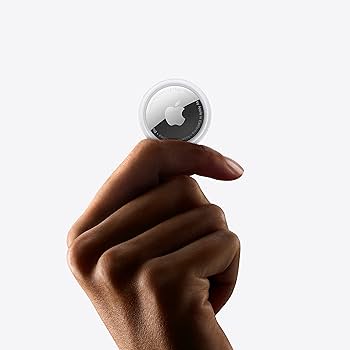Apple AirTag

I swear, the number of guitar cases I’ve lost track of… It’s a small miracle I still have a job. This isn’t just musician’s paranoia, it’s a logistical nightmare. My most recent adventure involved a priceless vintage Martin, a frantic phone call to the airport, and a very sweaty twenty minutes. That’s precisely why I took a keen interest in the Apple AirTag.
Forget the slick marketing; I’m not interested in tracking my dog or keeping tabs on my grocery list. My primary concern is safeguarding instruments and, frankly, anything that’s valuable and portable. The premise is simple, and that’s a good start. The AirTag, a little white disc, leverages Apple’s Find My network. You toss one in your instrument case, attach it to your pedalboard, or slip it into your gig bag, and you can locate it on a map using your iPhone.
Setting it up was almost insultingly easy. It’s the Apple way. The integration is seamless. The sound the AirTag emits when you ping it from the Find My app is surprisingly loud, which is perfect for those moments when you’re scrambling to find something in a crowded rehearsal space, or in the back of the tour van. That’s something a Tile, while cheaper, doesn’t handle as well, or at all. I’ve used those, too, mind you.
But the real test, as always, is in the field. I’ve been testing it over the last few weeks, using it with my travel guitar and, perhaps most importantly, with my effects unit rack. The Bluetooth signal range is decent – easily covering a typical practice room or stage. It uses Ultra Wideband technology for more precision if you’re nearby and have a compatible iPhone. So far, so good. However, it’s not perfect.
The main issue is the reliance on the Find My network. If your AirTag-tagged item ends up somewhere with no iPhones, iPads, or Macs around, it won’t update its location. Think of a remote cabin in the woods – or, more realistically, a forgotten rehearsal room in the middle of nowhere. You can still mark it as lost, and if someone with an Apple device comes within range, you’ll get an update. But there’s a delay factor that you need to accommodate. It’s a trade-off, really, for the convenience of not paying a monthly subscription.
For the traveling musician, the AirTag’s compact design is a massive advantage. It’s far less cumbersome than any GPS tracking device I’ve used. You can easily tuck one into a guitar case without adding significant weight or bulk. Now, the battery life is supposed to be around a year, but I’ll withhold judgment for now. Even if it turns out to be six months, the replaceable CR2032 battery means it’s a simple fix.
So, here’s the bottom line: if you’re a gigging musician, a session player, or anyone else who deals with valuable gear constantly on the move, the Apple AirTag is a no-brainer. It’s a cheap, effective, and surprisingly reliable way to reduce that sickening feeling when you realize you’ve lost something important. Just remember the network limitations, and mentally prepare for the occasional moment of digital silence. Go ahead and get yourself one. You won’t regret it.